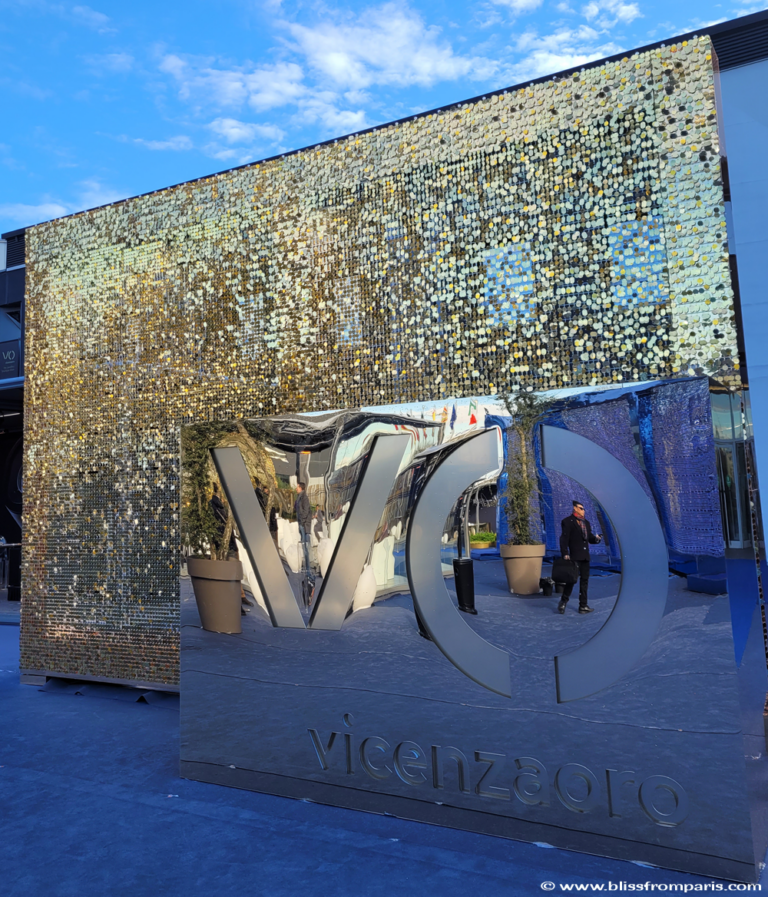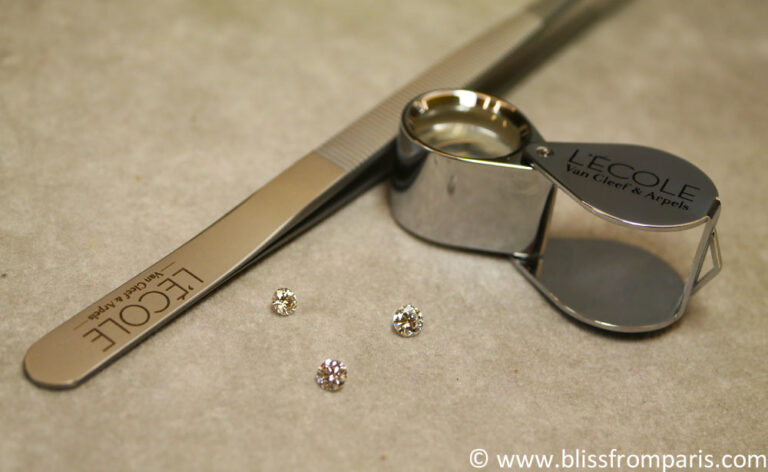What if a jewel could whisper a story, breathe with memory, or carry the echo of a poem? In this intimate and lyrical interview, designer and storyteller Beenish Mahmood opens the door to her world—where metal and gemstones are not just materials, but vessels of emotion, myth, and meaning. From childhood enchantments and literary roots to profound personal loss and artistic awakening, Mahmood shares how her pieces come alive through narrative and feeling. For anyone who believes that jewelry can speak, this is a conversation that lingers long after the last word.
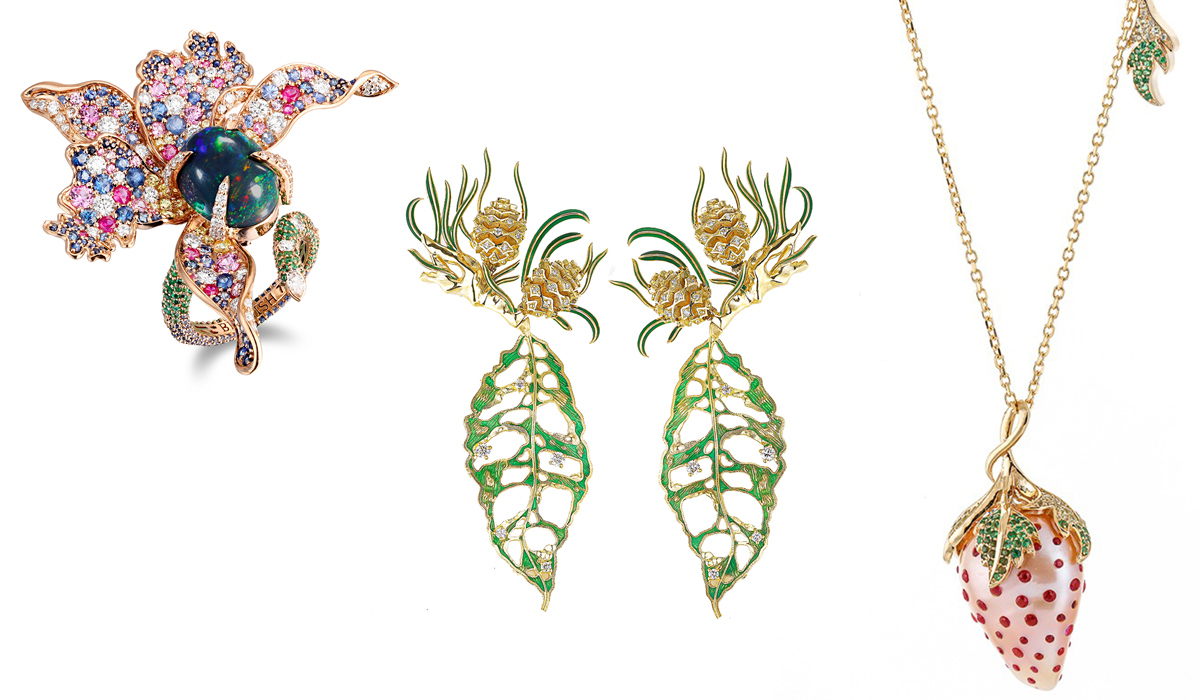
Let’s start at the beginning. Can you take us back to how your journey into jewelry began? What led you—both personally and professionally—into this field, and what made you feel that jewelry was the right medium to express your creativity?
It’s difficult to pinpoint a single moment when jewelry became my chosen language; it feels as though it’s always been with me, a quiet presence whispering in the background. As a child, I would lose myself for hours in books where jewels seemed almost alive—imperial topaz glowing like captured sunlight, pearls formed from crystallized tears, genies swirling within magnificent rubies, waiting to grant impossible wishes. My grandmother’s rings, my mother’s luminous pearls, my father’s Cartier cufflinks—they weren’t just objects; they were portals into lives lived, emotions held, and stories untold.
Over time, that fascination deepened into a need to create. I studied design and gemology not as a career move but as a way of giving shape to emotions too large for words. Jewelry, to me, isn’t static. It breathes, it remembers. I’ve inherited heirlooms, but their true value lies not in their material worth. It’s the memories they carry—the warmth of a mother’s pearls against her skin, the silent stories locked within gold and gemstones, the love threaded through them like an invisible chain.
I realized this was the perfect medium to crystallize fleeting moments into something eternal—something that could outlive me yet carry my essence forward.
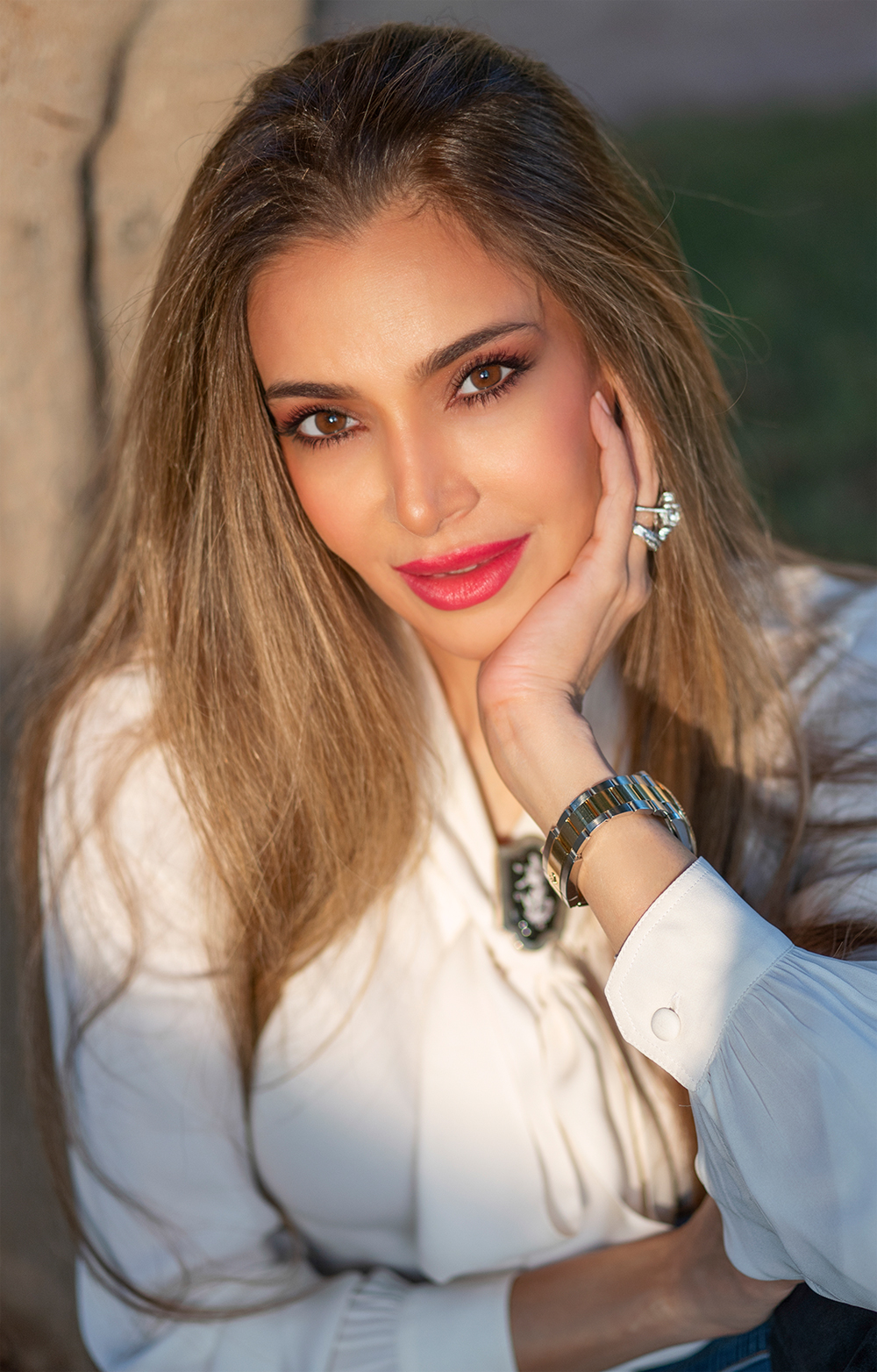
Before becoming a jeweler, your background included literature, writing, and visual storytelling. How has that foundation shaped the way you approach design today? Do you still feel like a writer when you create with metal and gemstones?
Absolutely. I don’t see a separation between the poet and the jeweler—they are one and the same. Words and jewels both distill entire lifetimes into something deceptively small, yet profoundly impactful. A single line of poetry can carry the weight of a heartbreak or the sweep of an epic saga. So too can a jewel—a carved gemstone, a bold curve of gold—quietly hold centuries of memory, devotion, and longing.
To me, jewels are as evocative as words, like fragments of a personal journal or the beginning of a story: “Once upon a time…” They feel like whispers of great journeys, waiting for their next chapter in the hands of the wearer. When I design, I try to weave these stories gently into each piece—not in a way that feels overt or literal, but more like a soft murmur in the ear, a secret only the jewel and its wearer truly understand.
My background in literature taught me the scale of storytelling—the grandeur of myths, the intimacy of whispered confessions, the sweep of giant sagas. Even now, I often begin with words. A poem, a fragment of a story, an unspoken question—these become the anchors for the visual language that follows. Sometimes I think of my pieces as poems in three dimensions, each one carrying its own rhythm, its own breath, its own heartbeat.
Were there any key moments or turning points—perhaps a person, a place, or an emotional shift—that helped you decide to pursue jewelry as a full-time path, rather than just a side passion?
There were several, but one stands out with crystalline clarity. Less than a year before I lost my mother, I had said goodbye to my father. It felt like the circle of life closing in around me—losing both of them in such quick succession left me unmoored, grappling with grief too vast for words.
My mother’s battle with cancer was its own quiet epic. Her grace and courage in those final months left an indelible mark on me. She faced the inevitable with a strength so profound it made me question my own. I realized I had been carrying a secret fear of failure for too long, using it as an excuse to keep this part of myself—my art, my voice—on the sidelines.
In the stillness of loss, I found myself returning to my sketchbooks almost instinctively. Creating wasn’t a decision then; it was survival. It became a form of catharsis, a way to process heartbreak and find meaning where there seemed to be none. It wasn’t about building a brand or making a bold career move—it was like breathing again after being underwater for years. That was the moment I chose to no longer sideline this part of me.
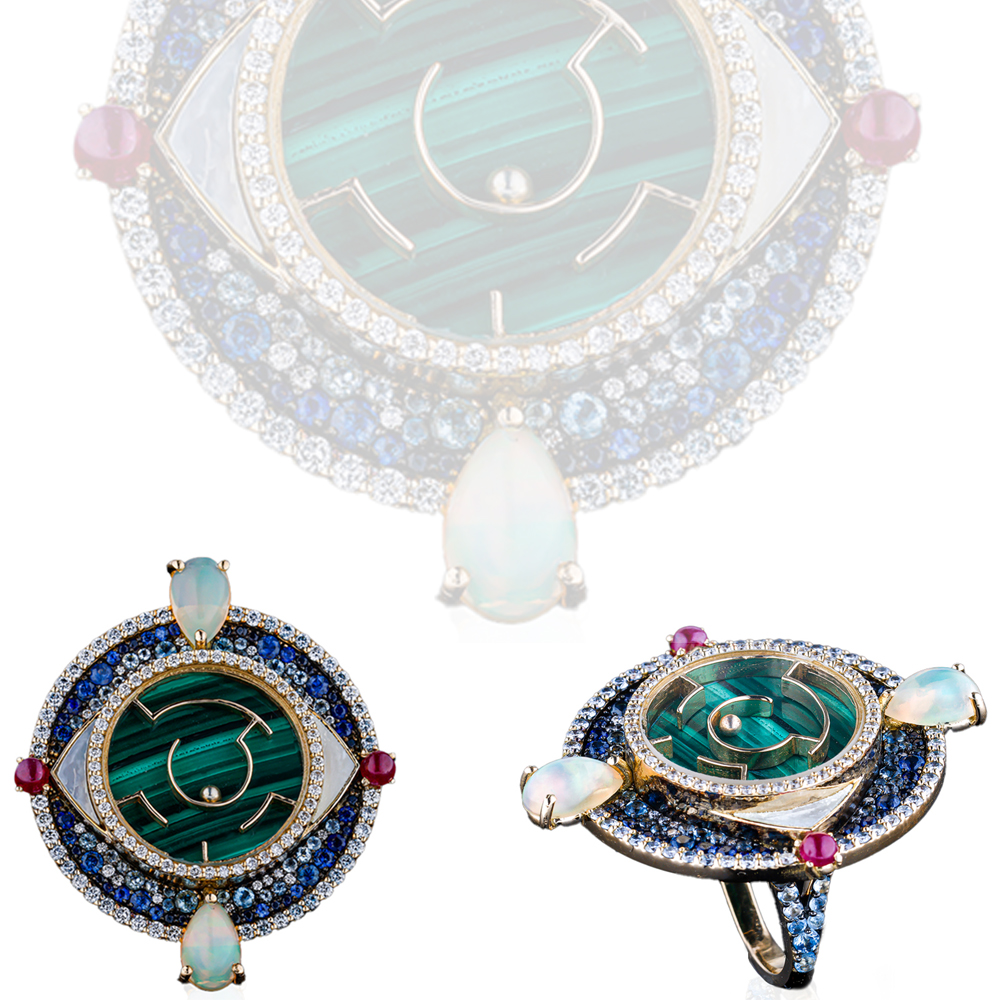
Your pieces seem to carry fragments of memory, mythology, and meaning. When you sit down to design, what usually comes first: the story, the form, or the material?
It almost always begins with the story. A memory, a fleeting image, sometimes even a line of poetry will set everything in motion. These stories live like shadows at the edges of my mind—fragments of mythology, echoes of places I’ve loved, or emotions too large to hold. As I sit with them, the form begins to take shape almost instinctively, like a dream becoming lucid. Lines emerge, curves unfurl, and suddenly there is a sense of rhythm, a language taking shape in gold and stone.
Only then do I seek out materials—gemstones and metals that feel like natural extensions of the narrative. A black opal that seems to hold a storm within it, a pearl luminous as a whispered secret, or a piece of coral that evokes childhood summers by the sea. Each material carries its own memory and emotion, and I choose them as much for their storytelling potential as for their beauty.
But there are rare moments when the process reverses itself. Occasionally, I’ll come across a stone so alive with presence that it demands its own story. In those instances, I feel less like a designer and more like a storyteller uncovering a tale already written in its depths. It’s a deeply intuitive exchange—a kind of quiet dialogue between the gem and my imagination.
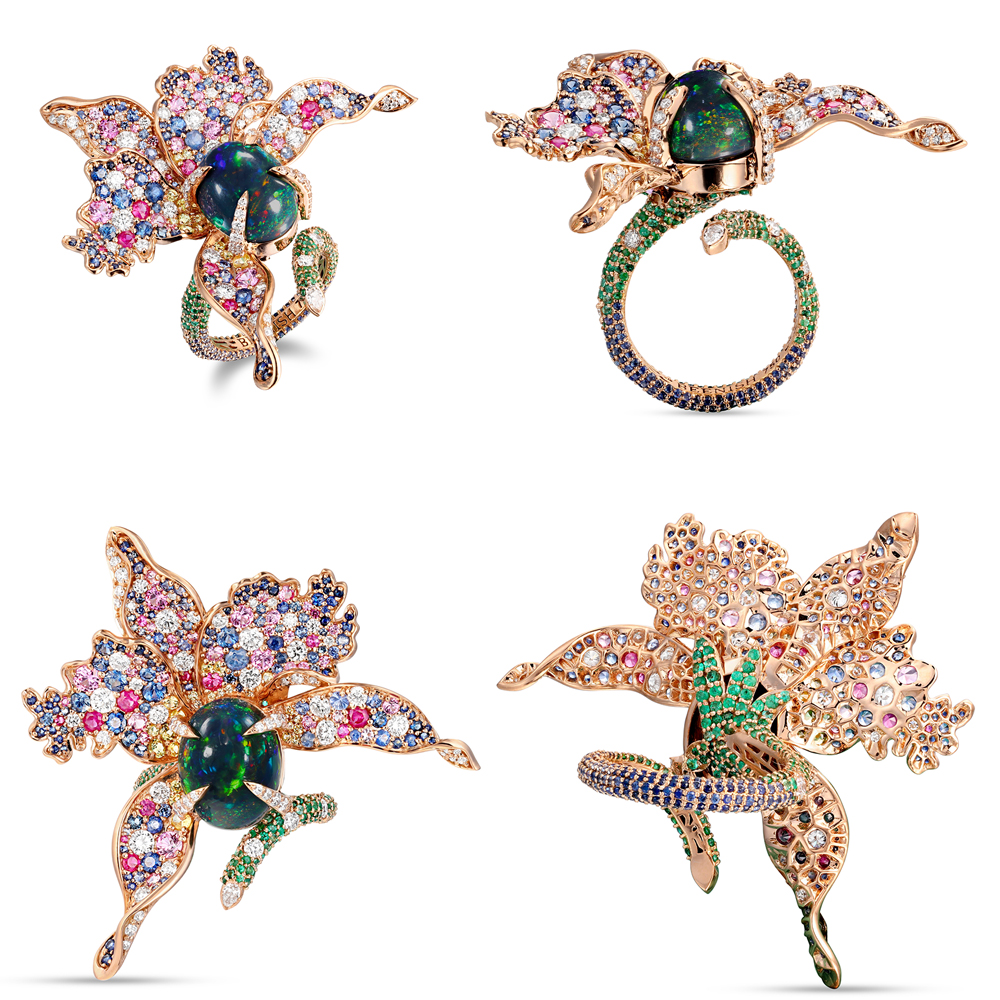
How would you describe your design language to someone who has never seen your work? What kind of emotions or ideas do you hope your pieces evoke in those who wear them?
My design language is a dialogue—between the past and the present, between whimsy and introspection, between boldness and restraint. It’s organic, sculptural, alive with rhythm. Even the straightest line in my work carries a softness, a sense of movement, as though it’s breathing.
Storytelling runs through every piece, underscored by an obsessive devotion to craftsmanship. There are often hidden surprises woven into the design—an unexpected detail glimpsed only by the wearer, a curve that catches light like a secret, or a subtle play of color that feels almost like a private wink.
I’m fascinated by how abstract thoughts and emotions—love, loss, wonder, longing—can be made tangible in gold and gemstones. To me, each jewel begins as a whisper of memory or a flicker of an idea, then slowly takes form like a poem written in three dimensions.
What do I hope they feel? A quiet gasp. A nostalgic ache. A sudden sense of being seen. Jewelry, at its best, is deeply personal—it should feel like a secret companion, a fragment of your story you didn’t know you were missing until you found it.
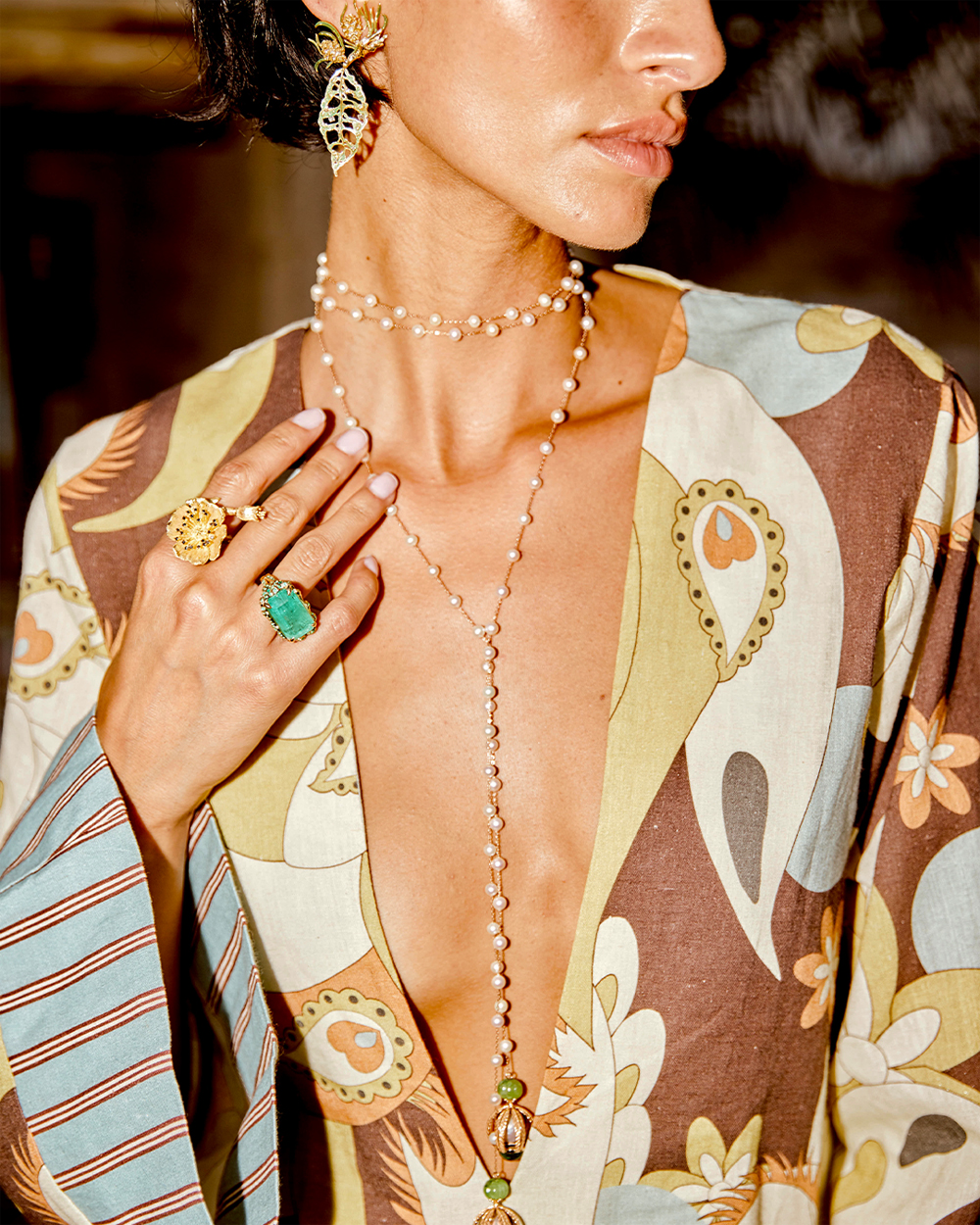
You’ve trained across different disciplines and worked in diverse cultural settings—from luxury maisons to local artisans. How have these experiences shaped your understanding of jewelry, not just as adornment, but as cultural expression?
My journey has shown me, again and again, that jewelry is never “just” decorative. It’s a cultural artifact—a reflection of history, identity, and emotion, worn close to the skin like a second heartbeat.
At the great ateliers and maisons, I learned refinement and structure—the discipline required to balance opulence with wearability, and the importance of cultivating relationships with an international clientele. There is a certain quiet elegance in how these houses approach their craft: precise, considered, and timeless.
But it was in smaller ateliers and among master artisans that I discovered something equally profound. Here, jewelry felt less like commerce and more like devotion. I watched skills passed down through generations—father to son to grandson—without written instructions or formulae, only memory and touch guiding their hands. There’s a beauty in this simplicity, in the humility of hands that have shaped masterpieces worn by kings yet remain stained with gold dust.
Together, these experiences have shaped my philosophy as a jeweler. I strive to create pieces that honor this lineage of craft and culture while speaking to modern sensibilities—jewels that feel both timeless and alive, rooted in tradition yet unafraid to whisper something entirely new.
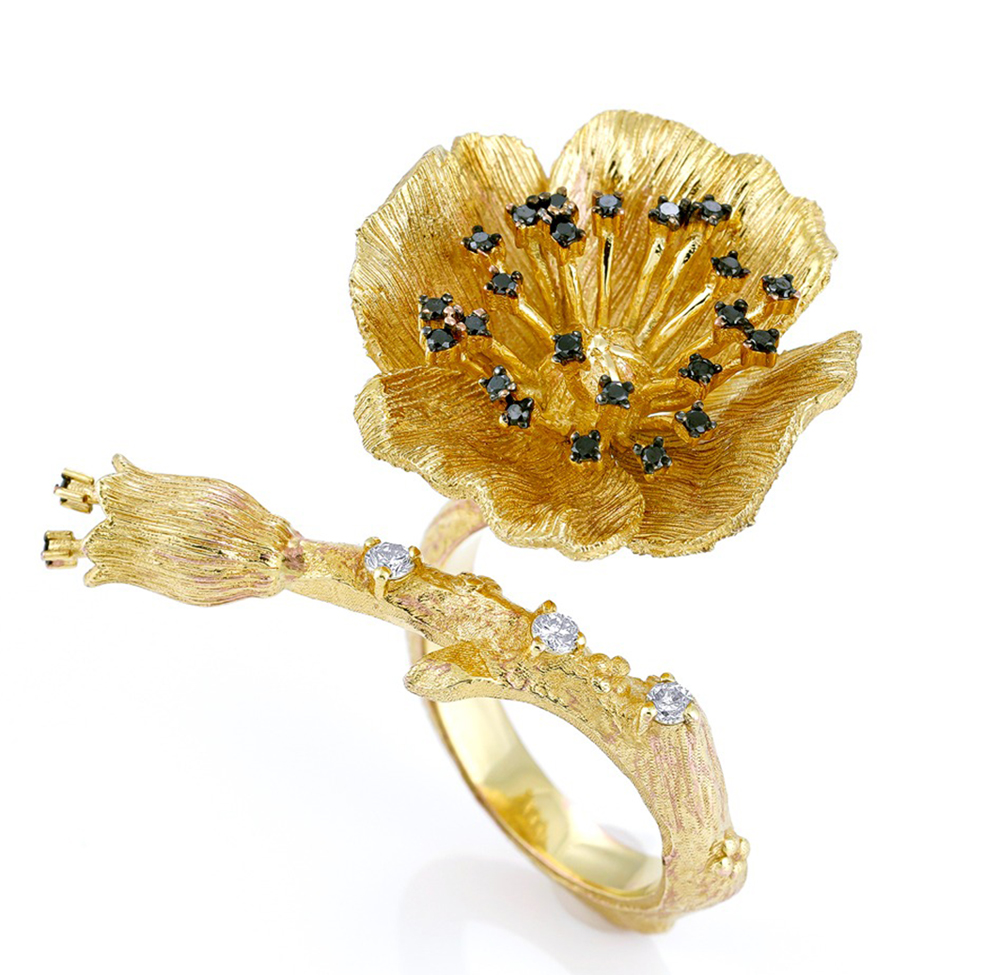
You seem to work with intention, choosing your materials and collaborations carefully. What draws you to a particular gemstone, craft technique, or artisan? What makes you say, ‘Yes, this belongs in my world’?
I choose materials and collaborators instinctively. A gemstone has to feel alive, as though it carries its own heartbeat. And I’m drawn to artisans who work with quiet reverence—where skill and soul pass down through generations, unwritten yet unbroken. But I’m equally inspired by newer artisans who bring a sense of adventure to their craft—those willing to color outside the lines, to explore the unexpected with the same curiosity I do. For me, “yes” is never about difference for its own sake. It’s a question of truth: what does this stone, this technique, this person hold inside that will make the wearer pause, wonder, and feel?
Sometimes it’s as simple as a dendritic agate—not rare, but occasionally revealing a perfectly formed garden or landscape within, a tiny world you can lose yourself in. That’s what makes me say yes: the wonder, whether in a material or a person. Because in the end, that sense of wonder is what I want the wearer to feel too.
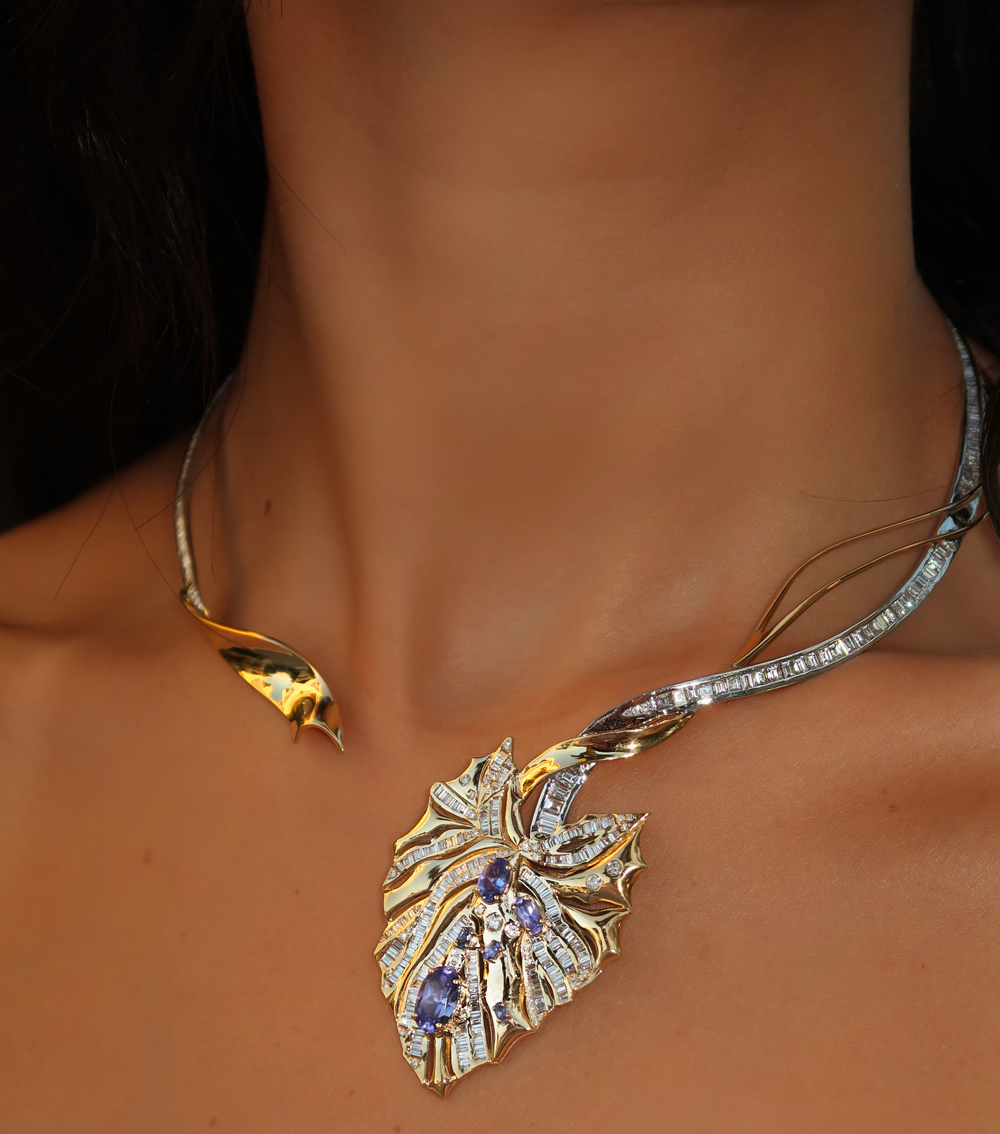
There’s often a lyrical or dreamlike quality in your creations, almost like visual poems. Where do your stories come from—childhood memories, places you’ve lived, books you’ve loved?
My stories come from moments that refuse to fade—childhood wonder, places that imprinted on me, books that became part of my inner landscape. I was a child of contradictions: lost in Enid Blyton’s Faraway Tree one day, and the sprawling moral universe of Tolstoy’s War and Peace the next. There was the deep longing and lyricism of Eastern poetry—Ghalib, Faiz, Omar Khayyam—woven with the transcendent mysticism of Sufi saints and poets, whose words felt like lanterns in the dark.
I grew up in the East, surrounded by rich traditions and timeless stories, yet spent summers wandering through Europe—its grand museums, cobblestoned streets, and manicured gardens. That duality of existence—the ability to belong to both worlds and yet feel slightly outside of each—taught me to see beauty in contrasts and to find harmony in the tension between them.
My father filled our home with philosophical conversations that stretched into the night over endless cups of tea, while my mother’s strong Pathan character—gentled by culturally appropriate conditioning—showed me how strength and softness can coexist, even in their quietest forms.
All of this and more is the amalgamation of things that make me who I am—and what bleeds through my hands into what I create. What I make isn’t a retelling; it’s a translation. A memory becomes a curve of gold, a feeling of longing turns into a ribbon of colored stones. The result is less a narrative and more a dream made tangible.
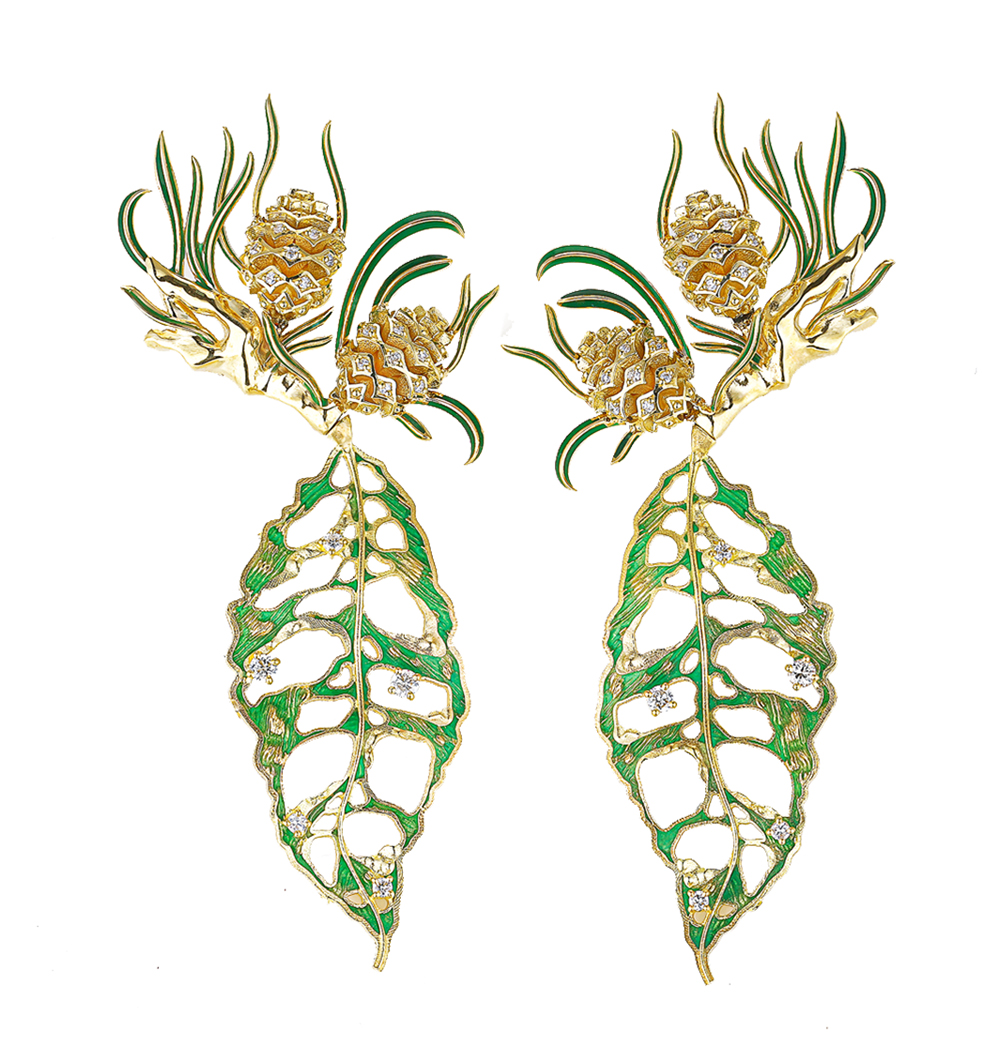
You speak of jewelry as something deeply emotional and personal. How do you navigate the space between telling your own story and leaving space for the wearer’s story to enter into the piece?
The most successful pieces, I believe, are those that feel both intimate and universal. I create by telling my truth—echoes of my own memories and stories—but I’m constantly humbled by how often people recognize their own experiences within my work.
This has been a revelation: it reminds me how connected we are as human beings. Across cultures and lives, we all love, we all lose, and at the heart of it all lies devotion. Whether it’s to a person, a belief, or a dream, that shared root of emotion gives each jewel the ability to carry multiple lives within it.
A ring inspired by my mother’s eyes might, for someone else, become a memory of a first love or a symbol of courage. That’s the magic of jewelry—it remembers. It holds space for the wearer’s story, even as it carries the echoes of mine.
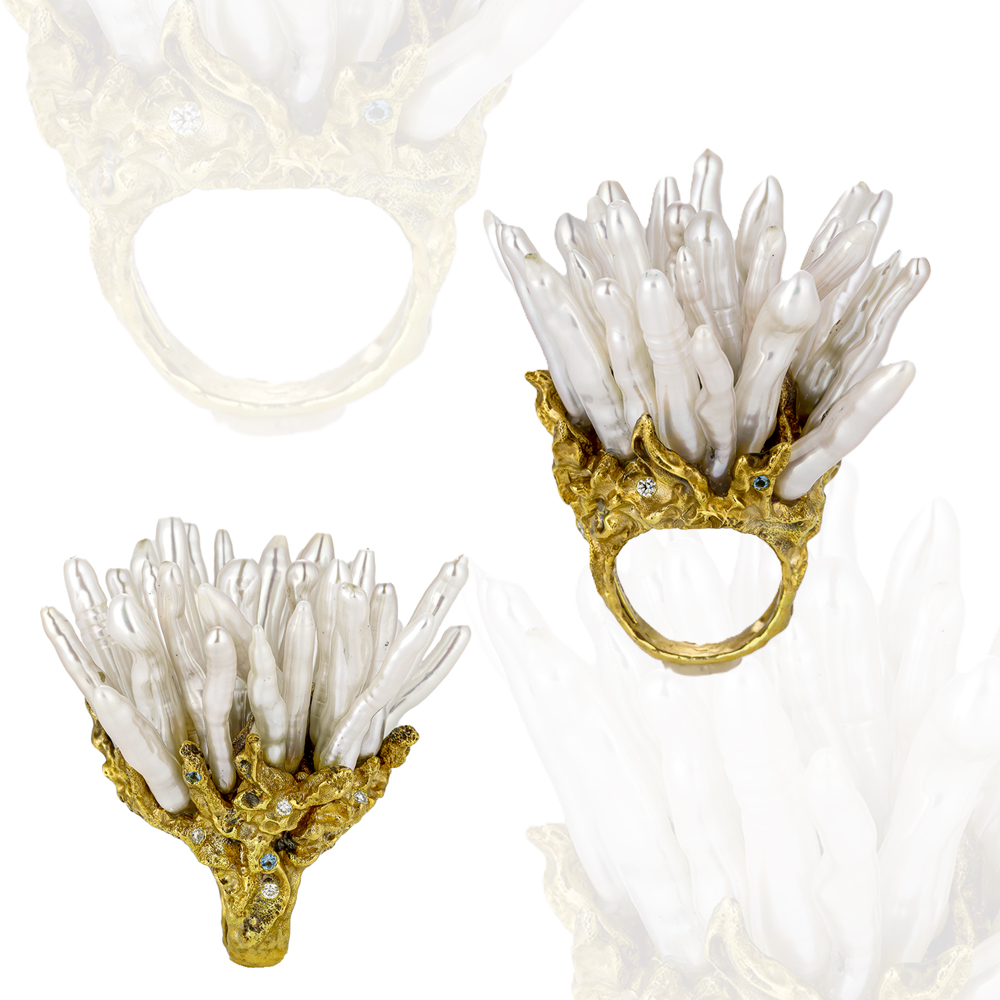
Your work has also engaged with themes that feel socially and culturally resonant. How do you see the role of a contemporary jeweler today—not just as a maker of beautiful things, but as someone who reflects or challenges the world around them?
Jewelry has always been a record of its time. Look closely, and you can read history in its forms: the baroque opulence of the Renaissance, the clean lines and functional poetry of Bauhaus, the defiant geometry of Art Deco—each era carrying its own response to the world’s chaos or longing.
Today, in an age of constant noise and shifting tectonic plates, I feel drawn to create jewelry that embodies both beauty and strength. Pieces that offer a sense of escapism yet remain rooted in the present. Not every jewel must carry a grand political statement; sometimes, the simple act of creating intentional beauty—something that exists purely to delight, to comfort, to remind us of our shared humanity—is itself a quiet form of resistance.
In my work, I try to hold space for this duality: to craft jewels that speak softly of courage, memory, and connection, while also daring to be beautiful for beauty’s sake. Because I believe we need both—anchors and wings.
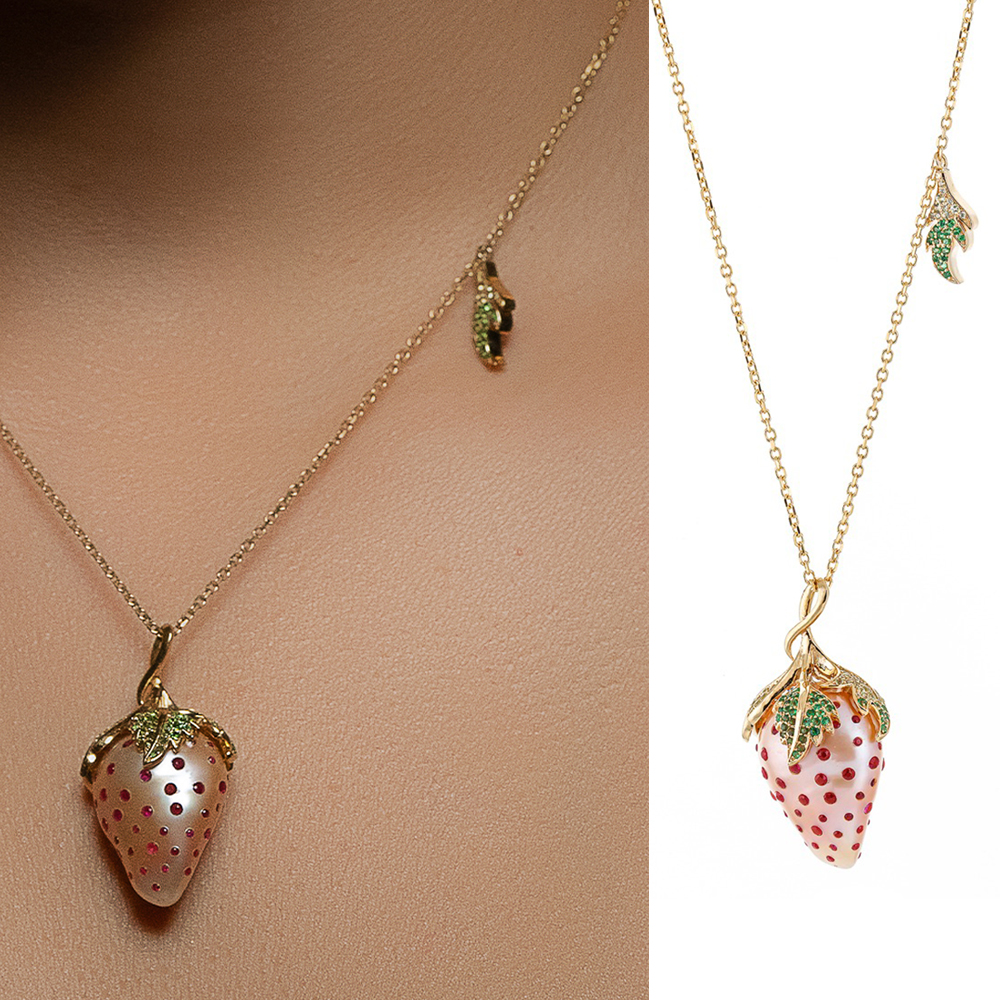
Launching your own brand is a bold step. What have been some of the most rewarding—and the most challenging—aspects of building a label that carries your name and vision?
The most rewarding aspect has been seeing my pieces leave my hands and begin their own journeys—absorbing lives, memories, and emotions far beyond mine. Jewelry is such an intimate art form; it doesn’t hang on a wall or sit behind glass. It lives with people. It celebrates their joys, holds space for their sorrows, and quietly marks the passage of time. To know that something I created might one day be passed from mother to daughter, carrying echoes of two lifetimes, is a privilege that never loses its wonder.
The challenges have been just as intimate. Building a brand means learning to hold two worlds in balance: the quiet sanctity of the creative process and the pragmatic demands of running a business. Production schedules, deadlines, logistics—they exist in a different rhythm from creativity, and at times, they can feel at odds with the slow, deliberate way I like to work.
But I’ve learned that growth doesn’t always mean doing more; sometimes it means doing less, but with greater intention and even greater love. Staying small allows me to stay close to my pieces, to give them the time and attention they ask for. It isn’t the fastest path, but it’s the truest one for me—and perhaps, that’s the real success.
As an artist, how do you protect the creative space you need while also navigating the business side of things—deadlines, clients, production logistics?
It’s an ongoing negotiation. I’ve learned to create rituals that shield my creative space—early mornings at my sketchbook, late nights spent shaping ideas before the world intrudes.
Deadlines need to remain slightly fluid because true connoisseurs of art understand that exceptional work requires time. Sourcing rare stones, building intricate details—these things deserve the space they ask for. Perhaps it isn’t the fastest way to build a business, but it’s the truest way for me as an artist. And I’ve found that the results, though slower, are infinitely more rewarding.
Looking forward, are there new materials, techniques, or themes you feel drawn to explore? What excites you most about this next chapter of your journey?
I’m obsessed with blending unexpected elements into my work. At heart I’m a metalsmith, and the romance of metallurgy has always fascinated me. And although perhaps not groundbreaking, this feels like a deeply personal evolution—an embrace of freedom after years of working within certain boundaries.
I’m exploring small elements of titanium, wood, coral, ceramic, amber, even leather—materials that don’t overshadow gold and gemstones but offer subtle contrasts, little moments of intrigue. I’ve always been a square peg in a round hole, and I’m finally comfortable with that. Breaking norms, I’ve learned, can be incredibly freeing if done with restraint and purpose.
Even technology is beginning to intrigue me. AI has opened floodgates of ideas—like artists incorporating moving images into jewelry—and it makes me wonder how innovation might coexist with the intimacy and humanity of this craft. The challenge is to integrate new materials and ideas without losing the soul of the jewel, ensuring it remains something deeply wearable and deeply felt.
This next chapter feels like a homecoming to the girl who first fell in love with the magic of transformation—but with the added courage to let the work speak in its own voice.
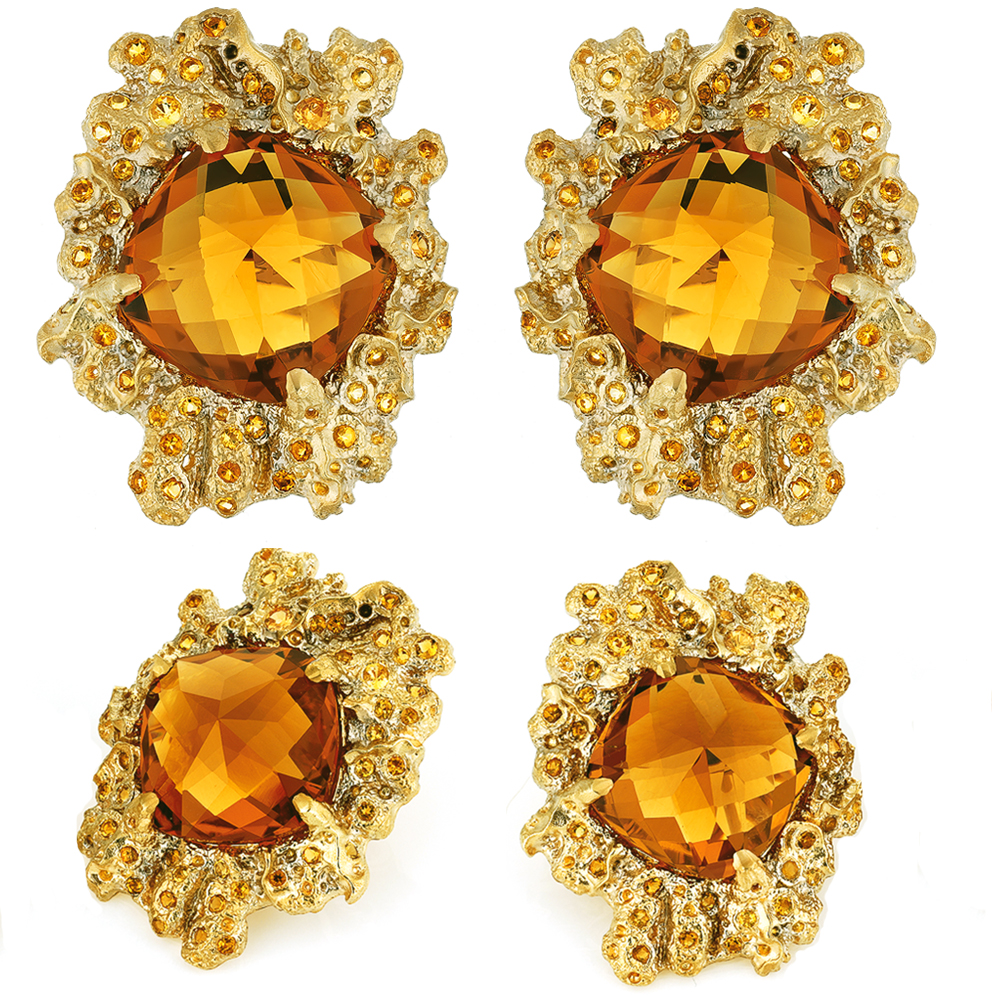
If someone were to look at your body of work many years from now, what do you hope they would feel—or understand—about the woman who created it?
I hope they would see a woman unafraid to grow, to look inward and gather the pieces of herself, even the fragile ones, and forge them into something strong and luminous. Someone who began cautiously but kept pushing herself to explore deeper truths—and discovered along the way that she was capable of far more than she ever imagined. I hope they would feel the quiet power of someone who loved deeply, dreamed wildly, and poured her whole heart into every detail. That they’d see not just jewels but fragments of a life—its tenderness, its storms, its wonder. In the end, I want my work to feel like a love letter: to beauty, to memory, to the art of being fully alive.


